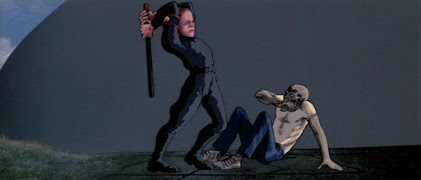There are love songs. There are breakup songs. And then there’s “Sweet Talkin’ Woman,” a tune so drenched in disco strings and desperation that it might as well come with a neon sign reading: “REBOUND IN PROGRESS.” Released in 1978 as the third single from ELO’s orchestral space-opera Out of the Blue (1977), “Sweet Talkin’ Woman” doesn’t just beg for love—it telegraphs it through synths, falsettos, and the overwhelming sense that the operator is never going to answer the damn phone.
Originally titled “Dead End Street” (because apparently Jeff Lynne was going through it), the song morphed into something shinier, catchier, and more wearable in sequins—an evolution not unlike turning a hangover into a hairstyle.
Beethoven Goes to Studio 54
Let’s talk sound. If the Bee Gees and Mozart had a baby during a thunderstorm, “Sweet Talkin’ Woman” is what would crawl out nine months later wearing glitter boots and a vocoder.
The track is written in C major—because, of course, it is, the pop key of choice when you’re chasing women and chart positions. Bev Bevan’s drumming lays down a four-on-the-floor beat that practically begs you to do the hustle while crying into your gin fizz, while Richard Tandy’s keyboard lines swirl around like a drunken carousel operator with a minor in classical composition.
The song clocks in at a tight 3:47 in the UK, but in the States it got trimmed down by ten seconds—because nothing says “radio-friendly” like a government-sanctioned edit for attention-deficit disco dancers.
Oh, and did we mention the transparent purple vinyl pressing? Because if you’re going to sing about heartbreak, do it on a record that looks like Prince’s sunglasses.
Electric Light Orchestra or Baroque ‘n’ Roll Avengers?
Jeff Lynne – Vocals, guitar, production, facial hair decisions. If Brian Wilson were a Brummie who discovered lasers.
Bev Bevan – Drums, percussion, your internal heartbeat during every chorus.
Richard Tandy – Keyboards and synths, human embodiment of electric baroque.
Kelly Groucutt – Bass guitar and high harmonies that sound like the Bee Gees with a PhD.
ELO String Section – Cello, violin, and “that sound you hear when angels dance to cocaine ballads.”
Lynne, who produced the entire Out of the Blue album in a Bavarian studio in something like a week, was a one-man Beatles fan club with access to a whole string section and no sense of restraint. And thank God for that.
Born in Bavaria, Raised in Your Car’s Cassette Deck
Out of the Blue was ELO’s magnum opus, their Sergeant Pepper with better hair. Recorded at Musicland Studios in Munich, the album was crafted during a blizzard, which explains why so many songs sound like they’re trying to find warmth in polyester.
By the time “Sweet Talkin’ Woman” dropped, ELO had already conquered America with A New World Record. But this track? It was their first real flirtation with disco, and critics noticed. Donald Guarisco called it their “first real step into disco”—and judging by the violins and syncopation, that step had platform shoes and a cocaine problem.
When You’re Ghosted by the Phone Company
Let’s get real: “Sweet Talkin’ Woman” is about a man so lovesick he’s relying on the operator to fix his love life. He’s on a one-way street. He’s calling into the void. He’s hoping that maybe—just maybe-the rotary dial of fate will bring her back.
“You got me runnin’, you got me searchin’”
“I was waitin’ for the operator on the line”
This is not a man in control. This is a man yelling into a payphone at 2 a.m. while pounding a vending machine for not dispensing Twizzlers. He’s exhausted, possibly hallucinating, and stuck on a dead-end street—a holdover from the song’s working title and a perfect metaphor for emotionally unavailable women who vanish faster than an open line at the DMV.
A Breakdown You Can Dance To
“Sweet Talkin’ Woman” is not just a breakup song. It’s a breakdown song. It’s the musical equivalent of running after someone at the airport, only to realize you’re in the baggage claim and she’s in Terminal 2, boarding a flight to Milan with a guy named Paolo.
But here’s the kicker: it feels fantastic. Even as the lyrics spiral into emotional chaos, the strings lift you up, the chorus propels you forward, and suddenly you’re dancing despite the doom.
Disco’s Most Melodic Nervous Breakdown
The song hit #6 in the UK and #17 in the US, solidifying ELO’s place as the band your dad danced to in college while questioning all of his romantic choices. Critics applauded the genre-melding ambition, calling it everything from “catchy” to “semi-classical” to “busy but melodic,” which is the polite British way of saying, “we like it, but also please calm down.”
It also laid the groundwork for acts like Huey Lewis and even Queen to embrace strings, swagger, and sadness all in one three-minute blitzkrieg of melody. Today, it’s still a staple on classic rock stations and awkward wedding playlists where the bride’s uncle tries to explain ELO’s genius while holding a light beer and swaying to the beat.
She’s Gone So Long—and Yet She’s Still Right There in the Chorus
In the end, “Sweet Talkin’ Woman” is a masterclass in contradiction. It’s a feel-good song about feeling awful. A dance-floor anthem about being ghosted. A heartbreak wrapped in harmonies so lush you almost forget the guy’s been left on read for three verses.
And really, isn’t that the ELO way? To make you cry a little, dance a little, and wonder why every breakup doesn’t come with a string section.
So next time you’re waiting for someone who isn’t going to call, put this on.
Crank the volume.
And hold on.
Even if it’s already over.

















